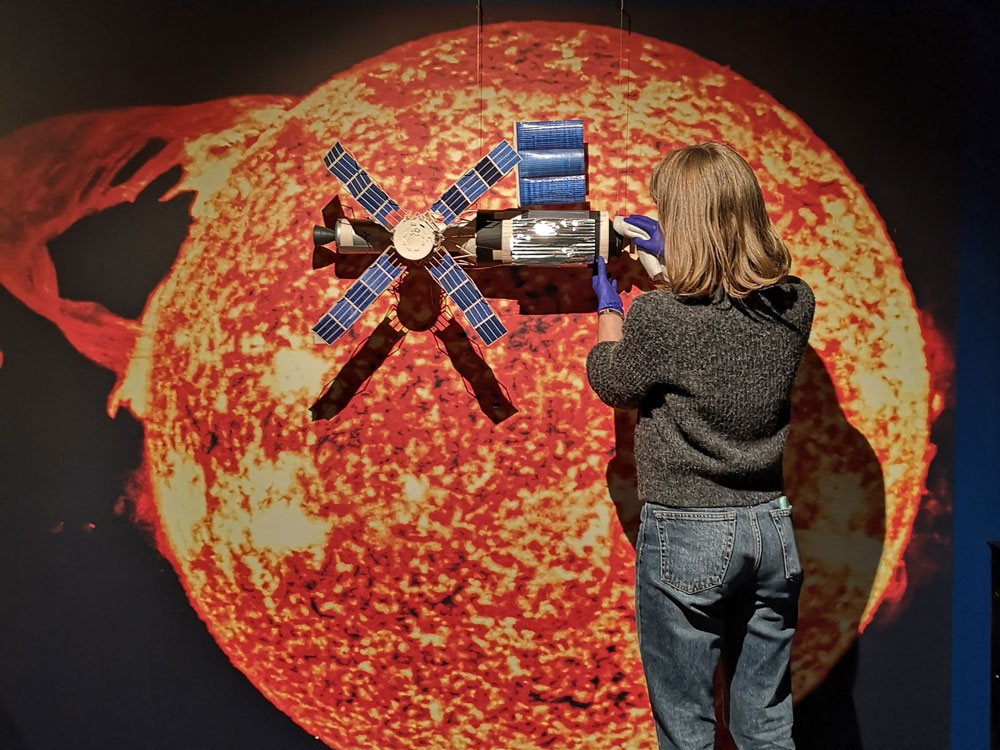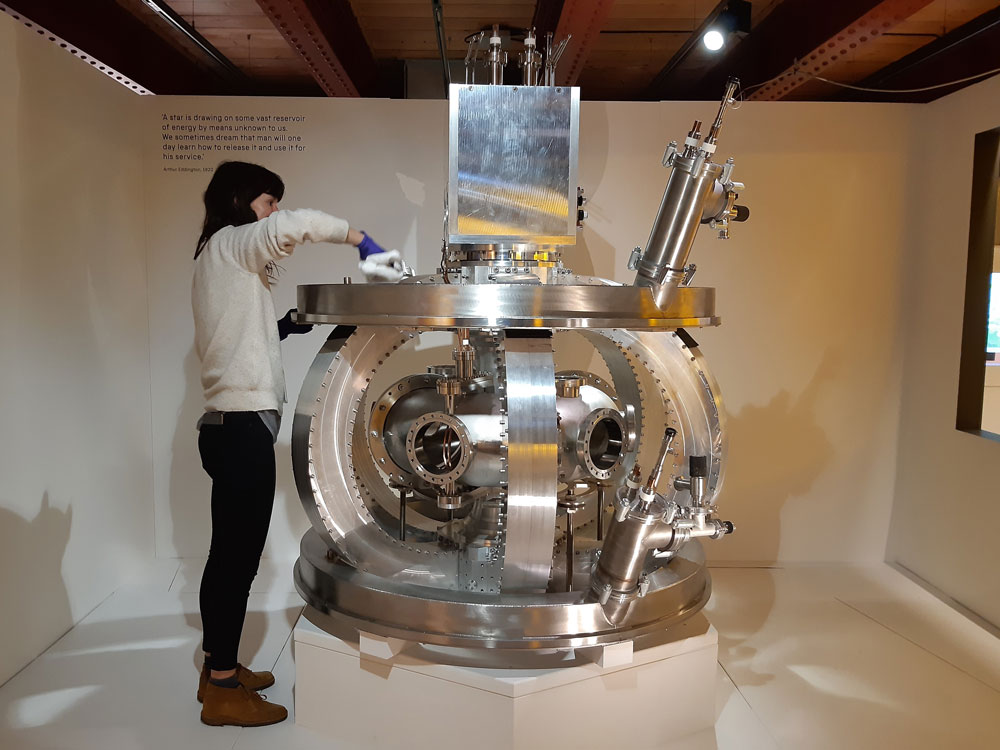
The Science and Industry Museum is home to thousands of fascinating objects, both in its public galleries and in its extensive archives. These objects tell the story of Manchester’s industrial past and its role in shaping the modern world. To ensure we can keep bringing these stories to life, it’s essential our collections and objects are well looked after. This is the job of the conservation team.
In March 2020, with the Science and Industry Museum heading into lockdown along with the rest of the country, it was important to prepare the collection for the museum being closed.
One aspect of conservation that not many people are aware of is prevention. As Conservators, we look after the collection by carefully cleaning and painstakingly repairing objects, but we also look after it by preventing it from harm or damage. We make sure the objects are comfortable, getting the temperature and humidity just right; prevent any damage by making sure the lights are not too bright; and ensure that insect pests don’t cause any harm.
Being physically away from the collection for 133 days meant we were mostly reliant on the preventive side of conservation during lockdown, ensuring it was functioning well and was being closely monitored throughout.
There were still a number of potential problems we could have encountered while the museum was closed:
- The collections are still susceptible to damage from dust build-up, which can be abrasive and carry harmful particles such as mould spores.
- Pest infestations could have caused damage due to organic materials being eaten, wood-boring insects damaging timber and pests nesting where they shouldn’t.
- Environmental fluctuations can cause both structural and surface damage to collections if not stabilised.

Regular cleaning of the objects was paused while the museum was closed. However, we were continuously monitoring the museum, and what we found from regular updates was that dust levels were much lower than when open to the public. Debris and dust had not entered via doors opening and closing, and dust generated by people’s clothes fibres etc. had not been accumulating. The objects on open display were given a thorough inspection and clean once the collections care team were back on site, and the objects in air-tight cases safely packaged away in storage areas were found to be just as they were before the museum closed.
Insects are around us all the time—it’s just that most of us don’t normally take much notice. As Conservators, however, we’re always keeping an eye out for insects as they can be a good indication of changes in the environment, or even of an infestation that could damage your collection. Insect pest activity is closely monitored across the museum on a regular basis. It’s not the prettiest of jobs and not for the squeamish, but it is absolutely essential in order to obtain a baseline of activity, to know what is normal for your museum, and to recognise any changes.
As the seasons progressed from spring to summer over lockdown, that’s when pest activity can increase, so we knew that we needed to get back in as soon as possible to carry out our regular monitoring programme. Checks following lockdown mostly revealed a lot of spiders, which are thankfully not damaging to our collection, and silverfish in some damp corners away from collections.
Changes in temperature, humidity and light levels can be very damaging. We have an environmental monitoring system which records all these levels in spaces with collection objects. We have around 50 monitors across our site and can access the data remotely and receive alerts if the environment moves outside of the desired parameters.
Studying any changes to the data alerts us to potential problems such as an active leak or issues with an air handling unit in a controlled environment. Data did change on several occasions during lockdown. When this happened, we were able to alert the teams who were continuing to work on site throughout the closure to check the space for any potential issues, and the situation was easily rectified. Thankfully, the issues investigated weren’t anything too serious.

Before lockdown, we also made sure to change batteries in sensors around the site to keep the data transmitting!
Did you know that objects get ‘tired’ too? In museums, it is normal practice to swap out objects and change exhibitions. This keeps things interesting for our audiences but also allows us to rest the objects.
Some objects don’t like light and over exposure can cause irreversible damage such as fading. With the museum closed for 133 days and lights switched off, the objects currently on display took a natural rest, which will help with future conservation.
Our museum is housed on the site of the world’s oldest surviving passenger railway and several historic warehouses. These are all listed buildings to preserve. Of course, old buildings can be more problematic. They might leak or contain areas with poor environmental conditions that are not as straightforward to remedy as new buildings, and require close monitoring. For this reason, it is important to have emergency plans in place.
These were updated to reflect the new circumstances, and we made sure we had prepared a supply of any emergency materials we might need if something went very wrong. We also covered over certain objects just to make extra sure they were safe.
All this gives you an idea of what went into getting the objects and collections prepared to spend around four months without us on hand to look after them. In this situation, as frequently in conservation, prevention is better than cure.